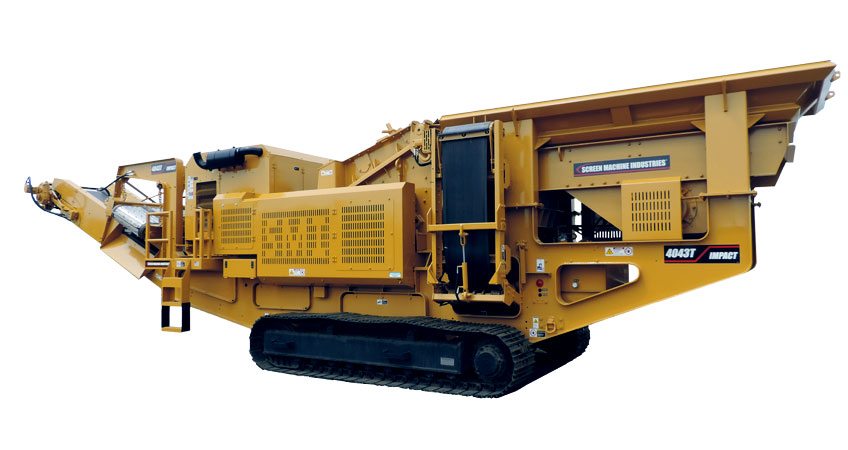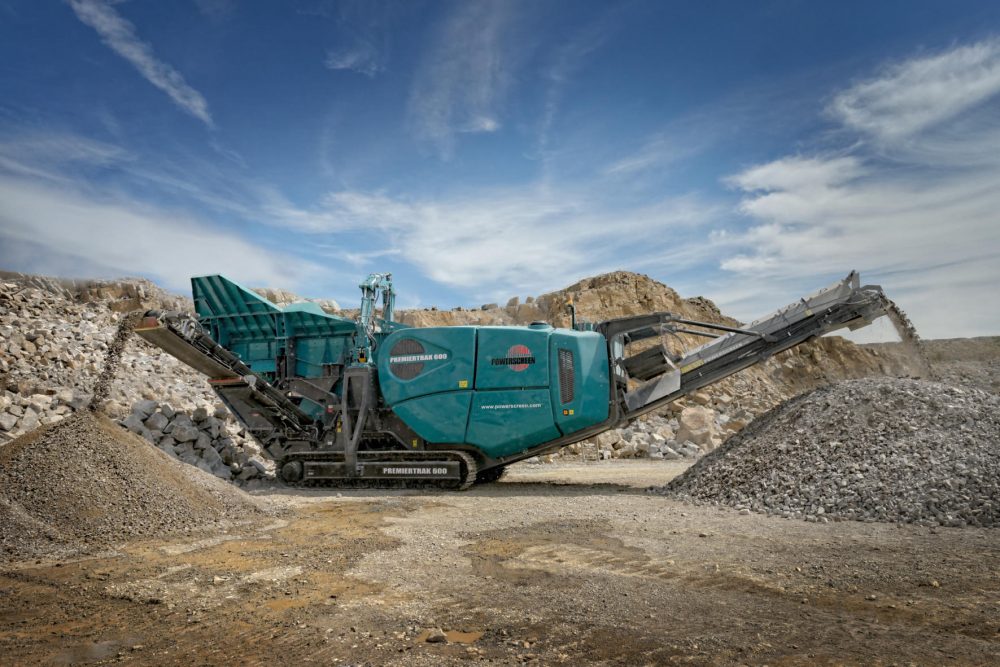Crush it Right: Navigating the Market for Concrete Crusher for Sale
Crush it Right: Navigating the Market for Concrete Crusher for Sale
Blog Article
Optimizing Sustainability: The Duty of Concrete Crushers in Recycling
Concrete waste is a widespread ecological issue, with the building and construction market being one of the largest factors to worldwide carbon exhausts. By taking advantage of the power of cutting-edge modern technology, concrete crushers provide a myriad of advantages that not only reduce waste however also preserve natural sources and mitigate the ecological impact of building and construction projects. In this conversation, we will check out how concrete crushers function, highlight the advantages of recycling concrete, display successful instance studies, and supply a glimpse right into the future of this evolving area.
The Environmental Effect of Concrete Waste
The environmental effect of concrete waste is a substantial issue in the world of recycling and sustainable building and construction practices. Concrete is just one of the most extensively used construction materials because of its strength and toughness. Its production and disposal add to various ecological concerns. The removal of basic materials, such as sedimentary rock and clay, for concrete production results in habitat damage and biodiversity loss. In addition, the manufacturing process itself is energy-intensive and releases a considerable amount of co2 right into the ambience, adding to environment adjustment.
The disposal of concrete waste also poses environmental challenges. When concrete is demolished or removed from building and construction websites, it is usually sent out to land fills, occupying useful area and producing greenhouse gas discharges as it breaks down. Additionally, the improper disposal of concrete waste can infect dirt and water resources, affecting environments and human health and wellness.
Concrete crushers play a critical function in this procedure by breaking down concrete waste right into smaller, recyclable particles. Reusing concrete waste not just saves all-natural resources yet also minimizes carbon emissions connected with concrete manufacturing.
How Concrete Crushers Job
Concrete crushers are effective devices made to break down concrete waste right into smaller sized bits for recycling objectives. These equipments make use of hydraulic pressure and big jaws to apply pressure on concrete waste, squashing it right into smaller pieces that can be recycled as accumulations in new building and construction projects.
The procedure of how concrete crushers work begins with the feeding of the concrete waste into the crusher's hopper. The hopper, which is generally geared up with a vibrating feeder, makes sure a constant and also circulation of material right into the crusher.
As soon as inside the crusher, the concrete waste undergoes the squashing activity of the maker's jaws. These jaws, which are normally constructed from durable and solid products like manganese steel, put in incredible pressure on the concrete waste, damaging it down into smaller, much more workable pieces.
The crushed concrete waste after that goes through a collection of filters or screens, which sort the aggregate by size (concrete crusher for sale). This allows for the separation of bigger items that might require more squashing from smaller, ready-to-use aggregates
Once the concrete waste has actually been squashed and sorted, it can be utilized as a sustainable alternative to all-natural accumulations in various construction applications. By recycling concrete waste, these crushers play an important function in reducing the environmental influence of building and construction tasks while also conserving natural deposits.
Benefits of Recycling Concrete With Crushers

Another significant benefit of recycling concrete is the reduction in landfill waste. By recycling concrete, we can divert this waste from landfills and decrease the stress on these already limited resources.
Additionally, utilizing recycled concrete can result in cost savings in building jobs. Crushed concrete is typically cheaper than utilizing new materials, making it an attractive option for developers and contractors. Moreover, reusing concrete can additionally add to LEED (Management in Energy and Environmental Design) certification, which is an extensively identified criterion for sustainable building practices.
Study: Effective Concrete Recycling Projects
A number of remarkable case researches exhibit the success of concrete recycling tasks in different construction and framework advancements. One such case research is the Central Artery/Tunnel Job, also understood as the "Big Dig," in Boston, Massachusetts. The task included the construction of a brand-new underground freeway system, which required the demolition of existing concrete frameworks. By executing a concrete crusher on-site, the task was able to reuse and reuse about 98% of the demolished concrete, causing significant price savings and minimized environmental effect.
One more effective instance research is the Sydney City Northwest job in Australia. This significant facilities growth entailed the building of a brand-new metro rail line. To decrease the task's carbon impact and promote sustainability, concrete crushers were used to recycle the destroyed concrete from old structures and frameworks. This approach not only saved garbage dump area yet additionally resulted in substantial material cost savings and minimized transport prices.
Furthermore, the Los Angeles International Airport (LAX) expansion project incorporated concrete recycling as a key component of its sustainability initiatives. By using crushers to procedure and recycle the knocked down website link concrete, the task had the ability to draw away countless heaps of waste from land fills and minimize the need for virgin accumulation. This not only reduced environmental impact yet additionally assisted the job accomplish LEED accreditation.
These case studies show the performance of concrete crushers in maximizing sustainability and advertising the round economic climate in construction and infrastructure tasks (concrete crusher for sale). By welcoming concrete recycling, designers can reduce waste, conserve sources, and contribute to an extra lasting future

Future Innovations in Concrete Crushing Modern Technology
As the building industry proceeds to focus on sustainability and environmental duty, improvements in concrete crushing modern technology are positioned to change the way knocked down concrete is recycled and recycled. This is an interesting time for the industry as designers and researchers are regularly working in the direction of developing cutting-edge and new remedies to enhance the performance and effectiveness of concrete squashing processes.
Among the future innovations in concrete squashing technology is the advancement of robot crushers. These crushers will be furnished with advanced sensing units and expert system capacities, allowing them to autonomously determine and divide different materials in knocked down concrete. This will considerably minimize the demand for manual sorting, saving time and sources.
An additional area of advancement is using advanced crushing strategies that can remove a higher portion of accumulations from knocked down concrete. Currently, a significant amount of accumulations are shed throughout the squashing process. With the development of brand-new crushing technologies, it is prepared for that the recovery rate of aggregates will enhance, leading to a much more effective and sustainable recycling process.
Furthermore, researchers are checking out using alternate energy sources to power concrete crushers. By using sustainable energy, such as solar or wind power, the carbon footprint of the crushing procedure can be more lowered, adding to a greener and extra lasting building and construction sector.
Verdict
Finally, concrete crushers play a critical duty in making the most of sustainability through the recycling of concrete waste. By decreasing the environmental influence of concrete waste and advertising the reuse of products, crushers contribute to a more lasting building and construction market. The benefits of reusing concrete with crushers are many, including conservation of sources, decrease of landfill space, and lowered carbon discharges. With future developments in concrete squashing modern technology, the capacity for even better sustainability in the market is promising.
Concrete crushers play a critical function in this procedure by breaking down concrete waste right into smaller, multiple-use bits. Recycling concrete waste not only preserves natural sources but likewise reduces carbon exhausts associated with concrete manufacturing.
By implementing a concrete crusher on-site, the job was able to recycle and reuse about 98% of the destroyed concrete, resulting in substantial cost financial savings and reduced environmental influence.
To decrease the job's carbon impact and promote sustainability, concrete crushers were utilized to reuse the demolished concrete from old structures and frameworks.In conclusion, concrete crushers play a vital role in optimizing sustainability through the recycling of concrete waste.
Report this page